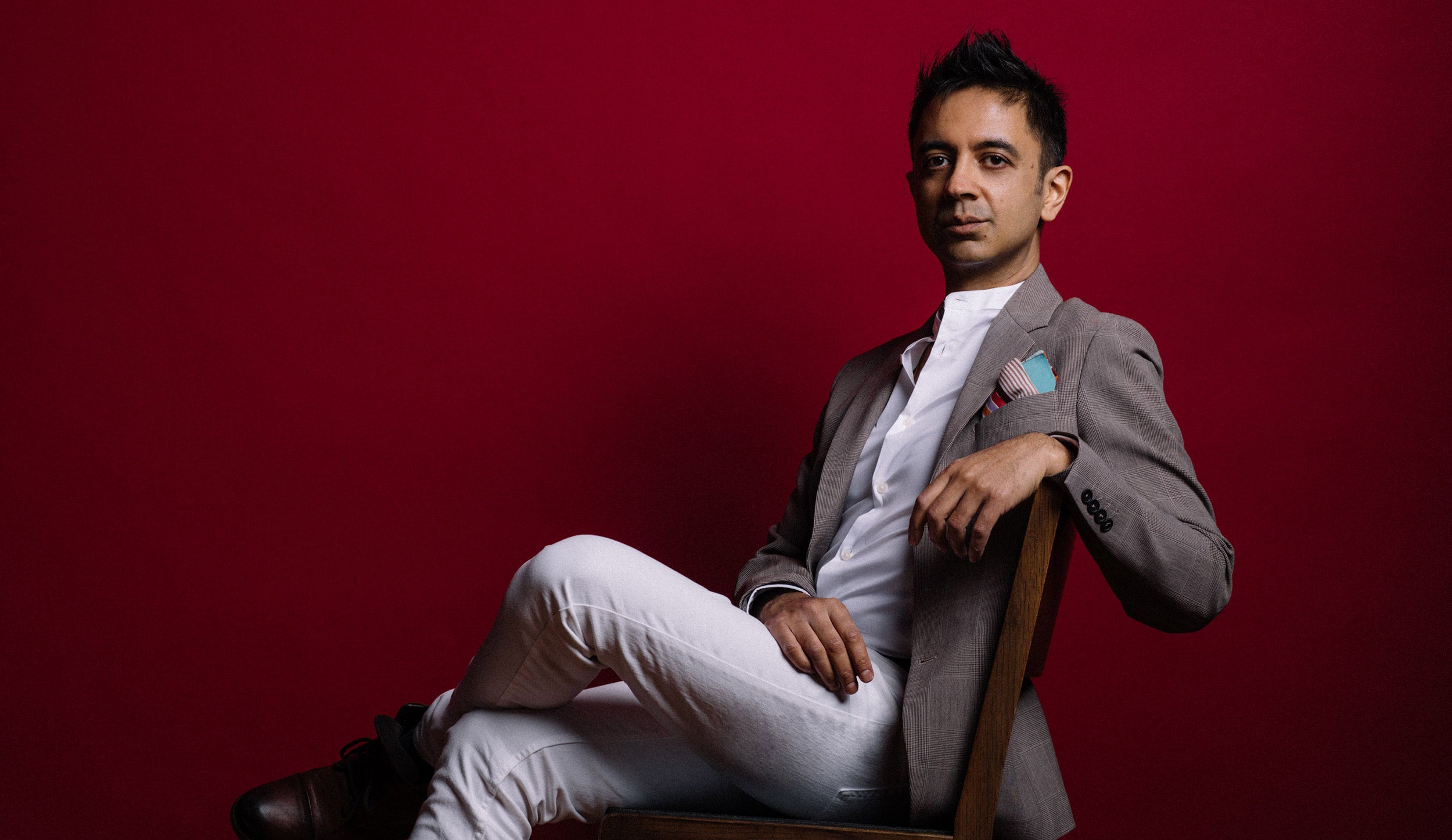Tuning up for a return to performing in person

Photo by Ebru Yildiz
Biggest pandemic lesson? Vijay Iyer says artists need to work together
Performers, composers, and arts practitioners have begun to return to in-person events and exhibitions in some places after adapting their work to the virtual world and dealing with the struggles of unemployment and illness during the COVID-19 pandemic. Vijay Iyer is one of the artists returning to the physical stage after 15 months of virtual performance and teaching. The composer, pianist, and Franklin D. and Florence Rosenblatt Professor of the Arts released a new album, “Uneasy,” in April with his trio (including bassist Linda May Han Oh and drummer Tyshawn Sorey) and has plans for a fall tour in Europe. He also wrote a composition for “Desert In,” an eight-part operatic miniseries co-produced by the Boston Lyric Opera. Iyer spoke to the Gazette about creating work during the pandemic and how the arts community can change for the better.
Q&A
Vijay Iyer
GAZETTE: A normal year for you would involve travel, touring, teaching, and more. Did you reassess your approach to work during the pandemic?
IYER: I’m in a privileged position in that I don’t really need to prove anything to anybody, but there’s been a shift in my orientation as an artist. I’ve been thinking about what would happen if I made art based on vulnerability rather than achievement, which is an ongoing question for me. As artists, we also seek to always be changing, and certainly, circumstances around us and the forces in our lives are part of that, but self-transformation is the name of the game.
GAZETTE: What has it been like to practice and perform with other people in physical spaces again?
IYER: I’m premiering new music outdoors at the BRIC Celebrate Brooklyn! Festival in August, and the ability to even imagine planning for that helped me realize how much I had been missing live performance. When I perform, it’s not about me — it’s about the community of artists whom I collaborate with and the vision we set forth together. Part of what helps us grow as musicians is the experience of encountering someone else and harmonizing with them in every sense of that word. You find ways to synchronize with someone else and be heard by someone else, to move together and build together. It’s more than just me, by myself, making some staggering work of genius. It’s actually about what we do together. So, working toward that has been really exhilarating. Just in the last couple of days — as I’ve been dreaming toward the festival performance and starting to create with that in mind — I’ve felt renewed.
GAZETTE: You taught music courses virtually during the pandemic. How did you adapt your teaching?
IYER: When the pandemic first hit in 2020, I was teaching an ensemble course, and it was very emotional for all of us to have to lose that. But it was astonishing to me that the students figured out how to make music together anyway using technology — they actually recorded an album between spring break and the end of term. It was one of the greatest moments of teaching for me, because they summoned something from within and made a way forward out of nothing.
This year, I knew the circumstances, so I tailored my courses to that. In the fall, I did a course called “Creative Music: Composer-Pianists,” focusing on several Black women composer-pianists of the last century. In the spring, I team-taught “Composer-Performers of the African Diaspora” with Yosvany Terry, a senior lecturer on music and a director of the Harvard Jazz Bands. We focused specifically on six living contemporary artists: Henry Threadgill, Cécile Mclorin Salvant, Esperanza Spalding, Gonzalo Rubalcaba, Nicole Mitchell, and Tyshawn Sorey. They all visited the class on Zoom to discuss their work with students, and the students created final projects based on what they’d learned. Their creative work was staggering. My jaw was on the floor. I was crying. It was just so inspiring.
GAZETTE: What do you hope your students learned from the experience of making art during the pandemic?
IYER: One of the things I try to share with students is that as artists, we have to work together. We’re seeing how fragile the entire performing-arts ecosystem is and how vulnerable artists are to the vagaries of the business, and a structure that maintains power relations, disempowers artists, and preserves inequality. The only way that we got through the pandemic is by taking care of each other, and that’s basically what they need to do if they want to have the arts be part of their lives in any way.
Interview was edited for clarity and length.




